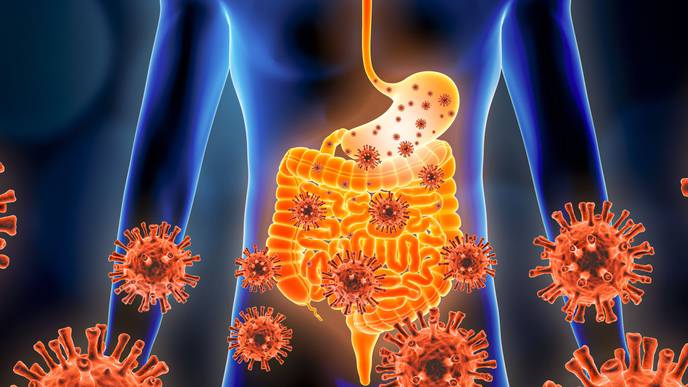Gastrointestinal Viruses Remained at Very low Levels for Nearly 2 Years, Finds Study

08/14/2023
Following the first stay-at-home orders issued in the U.S. to curb the spread of COVID-19, gastrointestinal viruses such as norovirus, rotavirus and adenovirus all but disappeared from California communities, and remained at very low levels for nearly 2 years. The research is published in the Journal of Clinical Microbiology, a journal of the American Society for Microbiology.
Interestingly, these viruses surged back to pre-pandemic levels in late 2022, said Niaz Banaei, M.D., professor of Pathology and Medicine (Infectious Diseases), Stanford University, and Medical Director of Clinical Microbiology Laboratory, Stanford Health Care. "Adenovirus F40/41, the adenovirus strains most frequently associated with gastroenteritis, actually jumped to levels two-fold higher than pre-pandemic levels."
Banaei suspects that the surge in viral infections was enabled by the waning of collective community immunity from lack of exposure during the pandemic. "Something similar has been described for the surge in respiratory syncytial virus infections in 2022," he said.
To identify changes in the prevalence of gastrointestinal pathogens, the investigators compared detection rates for community acquired gastrointestinal pathogens before, during and after California's COVID-related shelter-in-place. To that end, they used a polymerase chain reaction (PCR) panel test called the BioFire FilmArray GI panel, which tests for 22 of the most common pathogens that cause diarrhea and analyzed about 18,000 tests that were taken from January 2018 to December 2022.
The motivation for the research was the change in the rate of positives for certain pathogens during the COVID-19 pandemic, said Banaei.
It immediately became clear that the pandemic lockdown and shelter-in-place had created a natural experiment to investigate the transmission dynamics of pathogens causing gastroenteritis."
Niaz Banaei, M.D, Professor of Pathology and Medicine (Infectious Diseases), Stanford University
The research offers a unique window into the biology of gastrointestinal pathogens, raising some new research questions, said Banaei. "Why did some disappear while others persisted unaffected during lockdown? Why are some now surging to levels we haven't seen before?" Improved understanding of these phenomena could lead to ways to interrupt pathogens' spread, particularly in low- to middle-income countries where gastroenteritis remains a major cause of illness and death, especially among children. "It may also help us prepare for future unforeseen pandemics."
The American Society for Microbiology is one of the largest professional societies dedicated to the life sciences and is composed of 30,000 scientists and health practitioners. ASM's mission is to promote and advance the microbial sciences.
ASM advances the microbial sciences through conferences, publications, certifications, educational opportunities and advocacy efforts. It enhances laboratory capacity around the globe through training and resources. It provides a network for scientists in academia, industry and clinical settings. Additionally, ASM promotes a deeper understanding of the microbial sciences to diverse audiences.
Source:
Journal reference:
Bulterys, P. L., et al. (2023) Postpandemic Effects of COVID-19 Shelter-in-Place Orders on the Gastrointestinal Pathogen Landscape. Journal of Clinical Microbiology. doi.org/10.1128/jcm.00385-23.

Facebook Comments